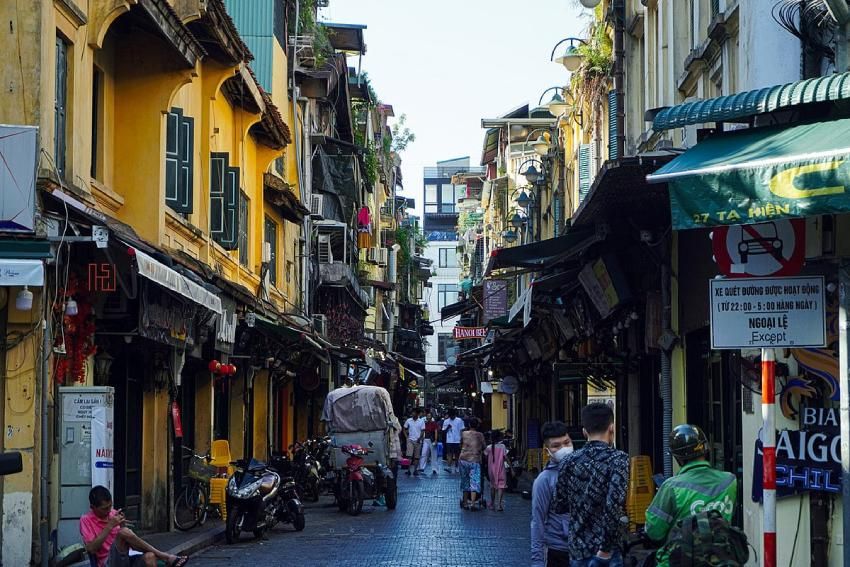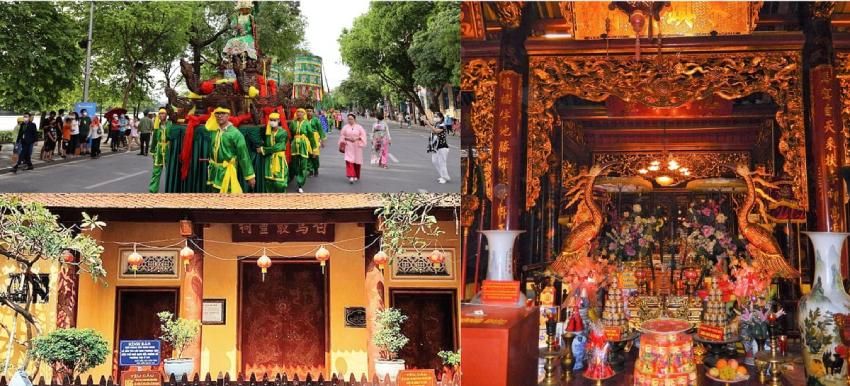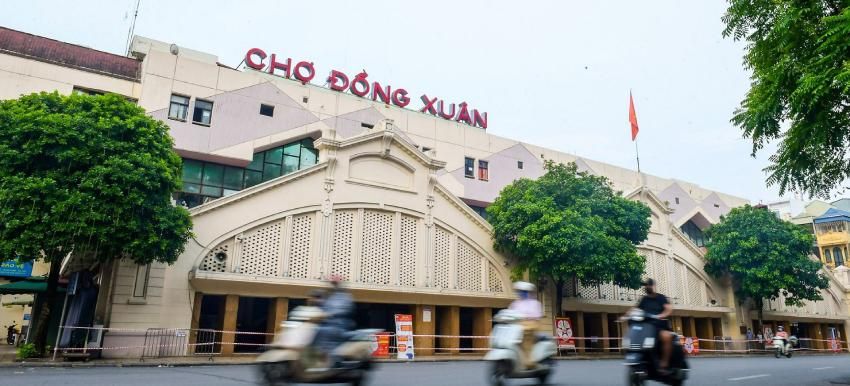36 Street Hanoi is a must-see destination on any Hanoi travel itinerary. These ancient streets will give visitors a chance to learn about the different eras of the city in the past and how much it has changed throughout the years. Also, each street has a unique appeal and specialty, showcasing the rich culture of Hanoi.
What streets are included in 36 Street Hanoi?
36 Street Hanoi, located in the Hanoi Old Quarter, is a culturally significant destination in the center of Vietnam’s capital city. The phrase “Hanoi 36 pho phuong” is engraved in the hearts and minds of most Vietnamese people and many tourists worldwide for its traditional architecture and diverse cultural experience.
These streets are unique in their ways, but most share one special similarity. They originated from the ancient Hanoi 36 streets. Those streets were named after the products and services they provided, following the word “Hang.” Over the years, some of them have retained their original names, while others have been changed.

The 36 streets of Hanoi currently are: Hang Buom, Hang Ngang, Hang Ma, Hang Mam, Hang Trong, Hang Be, Hang Bo, Hang Bac, Hang Giay, Ma May, Dong Lac, Hang Dao, Hang Chieu, Lan Ong, Nguyen Du, Hang Lam, Dong Xuan, Thanh Ha, Hang Gai, Hang Day, Hang Che, Hang Muoi, Quang Minh Dinh, Hang Duong, Hang Manh, Hang Hom, Hang Ga, Hang Dong, Hang Non, Hang Vai, Hang Luoc, Hang Bong, Lo Su, Bac Ninh, Hang Tre, Hang Voi.
Highlights of 36 old streets Hanoi
Architecture
One of the best streets in the capital is 36 Street Hanoi, known for its tube house architecture, sloping tile roofs, and commercial facades. These structures were primarily built during the 18th and 19th centuries. Although they may appear small and neglected, the locals have cleverly arranged them to serve the material needs of a standard household.
To truly experience Hanoi’s rich cultural traditions, a trip to 36 Street Hanoi is a must. This historic area is home to over 100 ancient architectural structures, including temples, pagodas, and guild halls. The Bach Ma Temple, located in Hang Buom, is particularly noteworthy as one of the four sacred temples of the ancient capital of Thang Long.

Despite the crowded streets and tightly packed shops, the area’s unique cultural identity is well preserved. During holidays or the Mid-Autumn Festival, visitors can witness a completely different atmosphere, bustling with activity and overflowing with market stalls and buzzing eateries. All of these elements contribute to Hanoi’s distinctive traditional cultural identity.
Cuisine
The 36 Street Hanoi has a wide range of roadside eateries, each with its own unique flavors and charm. From Thuy Ta ice cream at Hoan Kiem Lake to Trang Tien ice cream on the streets, there is no shortage of delicious treats to indulge in while exploring the city.
The street food in the Old Quarter, including dishes like bun cha, pho, and fish noodle soup, is closely tied to traditional Vietnamese cuisine and can be found in small street-side eateries or historic houses that have stood for decades. The charming and rustic atmosphere of Hanoi's streets provides the ideal setting for savoring these rich and unforgettable flavors.
TOP well-trodden attractions in 36 old streets of Hanoi
Bach Ma Temple
Address: No. 76, Hang Buom Street, Hoan Kiem District, Hanoi
Bach Ma Temple is among the four temples situated in the four main directions of Hanoi: Quan Thanh Temple in the North, Kim Lien Temple in the South, Bach Ma Temple in the East, and Voi Phuc Temple in the West. These four temples are believed to serve as spiritual centers and crucial defenses for the streets of Hanoi.

The exterior of the temple is adorned with antique designs, resembling an eight-story communal house. Upon entering the temple, visitors will be amazed by the splendidly decorated interiors and a stunning red-lacquered palankeen.
Additionally, there are numerous altars inside the temple, showcasing exquisite engravings along with valuable relics like paintings, imperial decrees, ancient weapons, stone stelae, metal bells, and palankeens. As an essential part of Hanoi’s cultural heritage, Bach Ma Temple is worth a visit when you explore 36 Street Hanoi.
Old City Gate
O Quan Chuong, also known as the “East Gate” or “Dong Ha Gate,” is an ancient gate located on Thanh Ha Street in Hoan Kiem District, at the intersection of Hang Chieu and Dao Duy Tu Streets in the heart of Hanoi’s Old Quarter. This gate was constructed during the Le Dynasty in the 10th year of Canh Hung (1749), featuring the Nguyen Dynasty’s feudal architectural style.

The watchtower of O Quan Chuong has two stories, with three arched doors on the first floor, including the main entrance, which is 3 meters high and wide, and two side doors, which are 2.5 meters high and 1.65 meters wide. The second-floor watchtower had four roofs and was used as a lookout by soldiers in the past.
O Quan Chuong is an iconic landmark that stands as a testament to the rich history of Hanoi streets and is a must-visit spot for anyone exploring 36 Street Hanoi.
Ma May Ancient House
Located in the heart of 36 Street Hanoi, 87 Ma May House is a historic gem. Constructed in the late 19th century, this house offers visitors a glimpse into the daily lives of the people of ancient Hanoi. It also serves as a testament to the traditional architecture of the city and highlights the importance of preserving and promoting ancient houses.

This narrow yet deep house features layers of rooms separated by courtyards, with the ground floor serving as a shop. It is a unique example of the architecture that can be found on the shopping streets in Hanoi’s Old Quarter.
Dong Xuan Market
The Dong Xuan Market is located in Dong Xuan Ward, Hoan Kiem District. It has been a part of the capital city for centuries, experiencing numerous changes over time. The market is composed of three floors, featuring five arched doors, and occupies an area of 6,500 square meters.

On the first floor, you can find clothes, glasses, shoes, suitcases, bags, and electronic devices such as battery chargers, loudspeakers, radios, etc. The second floor serves as a wholesale and retail space for clothes and fabrics, while the third floor offers children’s items. If you are planning to visit 36 Street Hanoi, the Dong Xuan Market is worth exploring.
To make the trip more interesting, there are several well-known destinations in and near the Hanoi Old Quarter that are worth visiting in addition to the historic 36 street Hanoi. Some must-sees include Hoan Kiem Lake, St. Joseph’s Cathedral, Long Bien Bridge, Hanoi Opera House, Ngoc Son Temple, Phung Hung Mural Street, etc.




